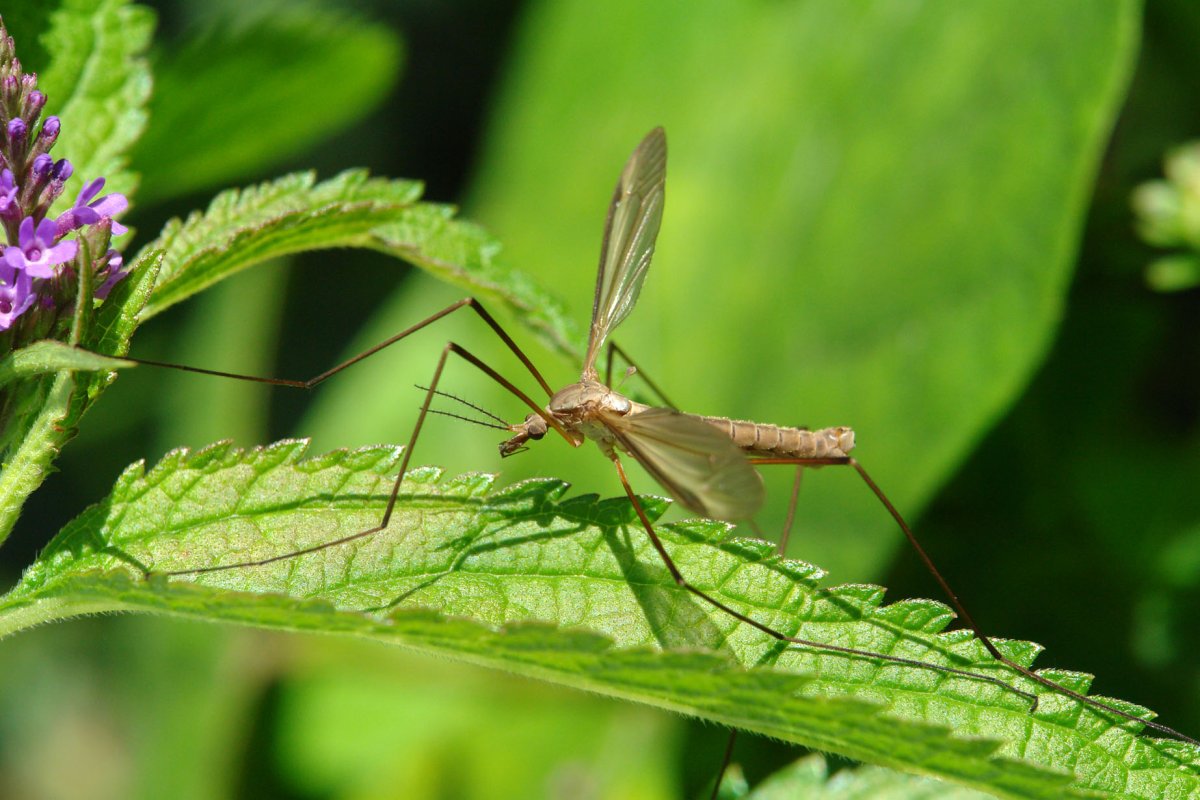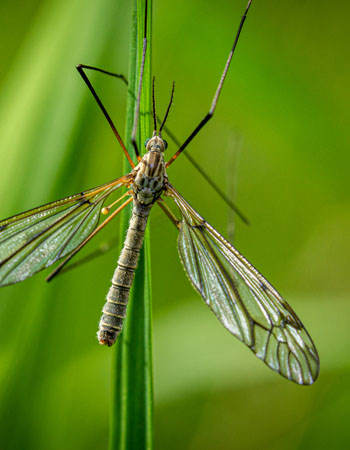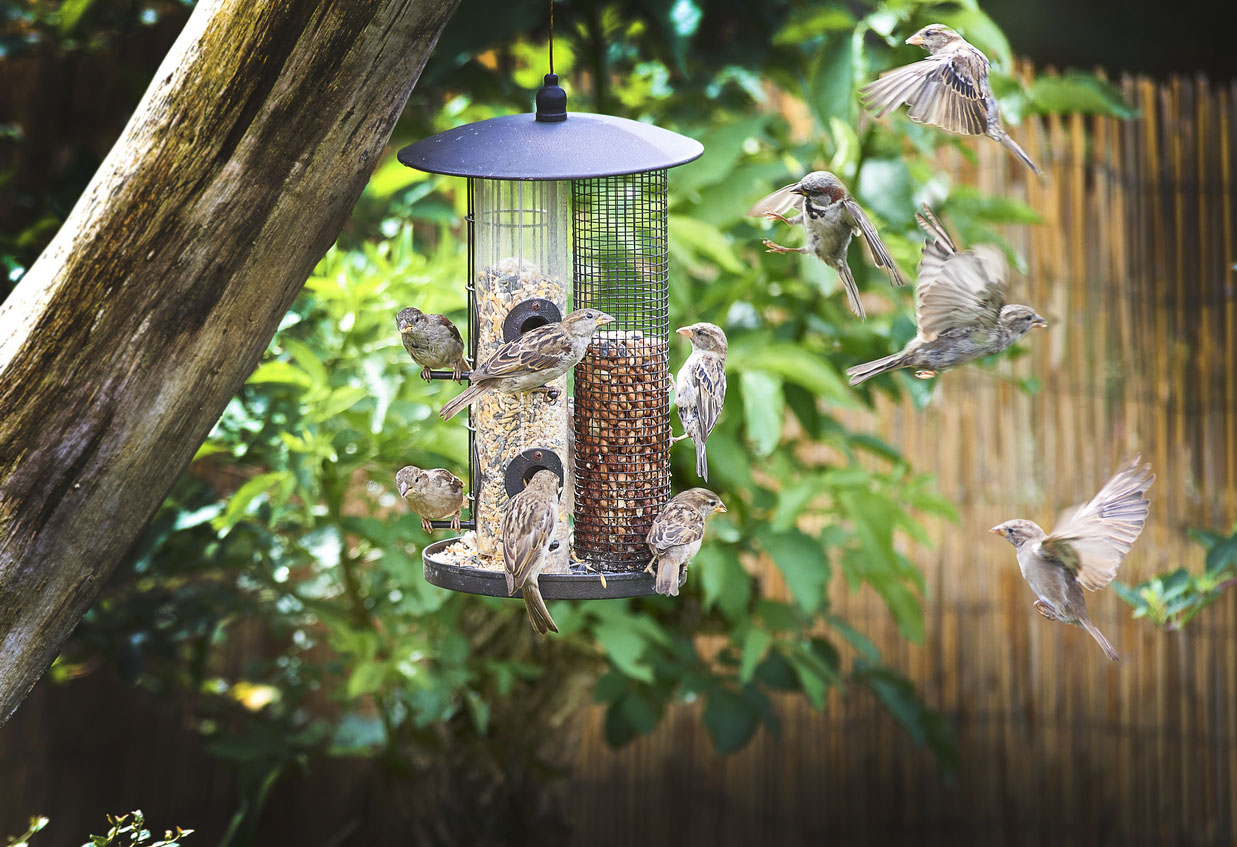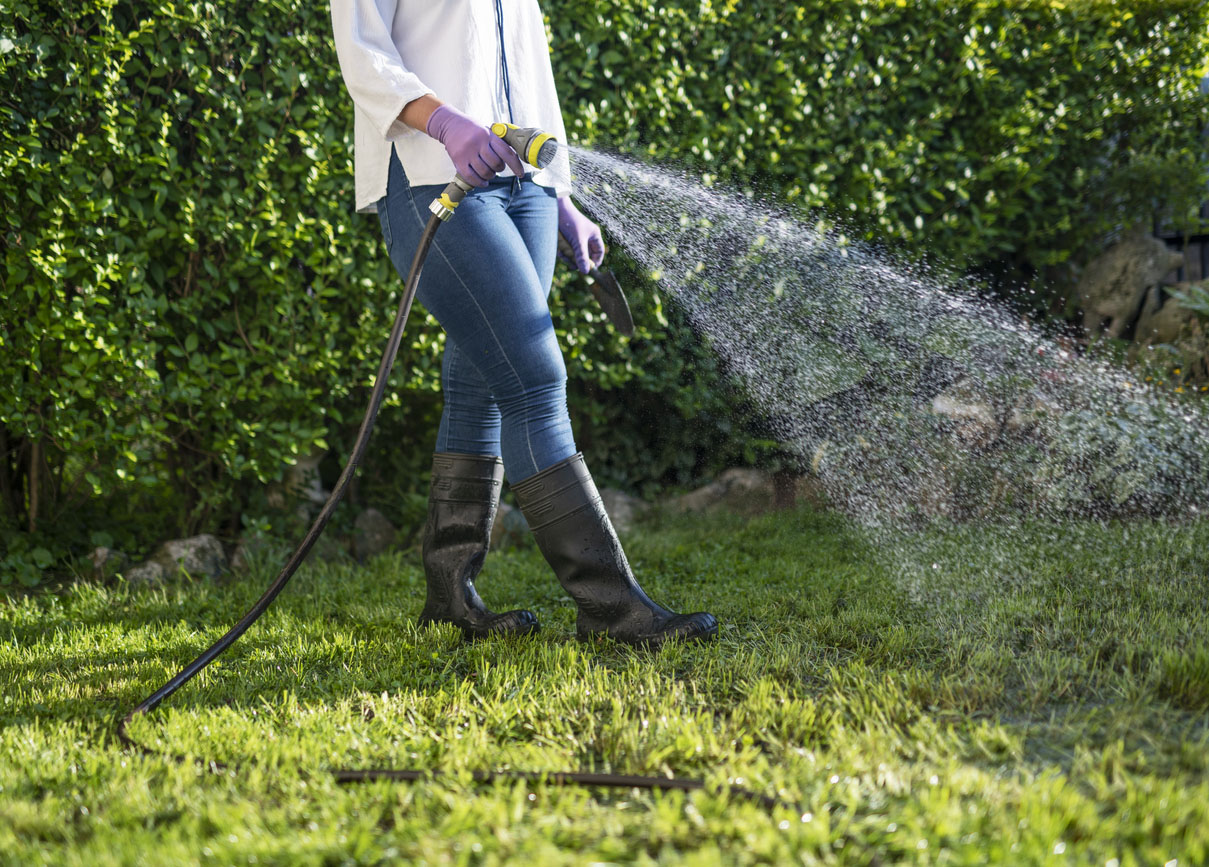

We may earn revenue from the products available on this page and participate in affiliate programs. Learn More ›
Crane flies look like large mosquitoes. They can have a 2.5-inch wingspan, and they are often yellow, brown, red, or gray. Crane flies have long antennae, and the female has a stinger-like ovipositor she uses to lay eggs in lawns. A crane fly, sometimes spelled cranefly, may look threatening, but it doesn’t bite or spread disease. Adult crane flies are harmless, but it’s their larvae that can do some severe damage to lawns and gardens.
A crane fly infestation will appear as unhealthy yellow grass, patches of dead brown grass, or bare dirt areas. Extensive areas of larvae will attract grub-hunting predators like birds and skunks, and they will dig at the lawn to get at the larvae. If you have a crane fly problem, you may be wondering how to get rid of crane flies. Here are some methods to eliminate this problem. However, if the problem persists, don’t hesitate to reach out to a professional: an expert will have the tools and knowledge to eradicate the situation in the most efficient way.
Time required: A few hours
Difficulty: Beginner
Estimated cost: $20 to $300
Tools & Materials
Bobvila.com may earn a commission from purchases made through these links.
- Protective gloves
- Bird food
- Neem oil, garlic, or essential oils (lavender or peppermint)
- Dish soap or insecticidal soap (optional)
- Liquid or granular insecticide
Before You Begin…

What do crane flies eat? Crane fly larvae feed below the surface and eat roots, blades of grass, and other garden plants. Crane fly larvae, sometimes called leatherjackets, can be green, white, or brown and live up to a year underground. They consume all they can until they emerge from the ground as adult crane flies. An adult crane fly, also known as a mosquito hawk or mosquito eater, doesn’t eat—it will ingest all it can in its larval stage and lives for only a few days.
Crane Flies vs. Mosquitoes
- Crane flies are larger than mosquitoes and can grow up to 2.5 inches long.
- Mosquitoes have shorter bodies, wings that are close to the same size as their body, and legs that bend more and are closer together. Crane flies have long, skinny bodies with long legs that do not bend as much.
Tips for How to Get Rid of Crane Flies
- Encourage natural predators.
- Stick to a lawn care schedule, and don’t overwater.
- Apply insecticides if needed.
Safety Considerations
- If you decide to use insecticides, use caution. Insecticides can cause irritation and illness. Be sure to wear a mask and gloves when applying commercial insecticides. Read the instructions carefully and follow all application guidelines.
- Some essential oils can be harmful to pets and grass.
STEP 1: Identify crane flies and their larvae.
If you notice patches of yellow or brown grass on your lawn, inspect the soil for evidence of crane fly larvae. Cut a square-foot section of the lawn and examine it for the presence of leatherjackets. They look like little worms and can be green, white, or brown. They are most active in the spring and the fall and prefer wet areas. If crane fly larvae are eating your lawn, act quickly to prevent any lasting damage.

STEP 2: Attract natural predators to your yard.
Birds will eat both adult crane flies and the larvae. Attract birds to your yard by installing bird feeders, birdhouses, and bird baths. When the birds come to your yard, they’ll instinctively search out bugs to eat. If the birds have a safe and comfortable place to live and nest, they’ll stay and eat as many crane flies as they can.
STEP 3: Try natural options like neem oil, garlic, or essential oils.
Neem oil is a natural pesticide made from the seeds of the Azadirachta indica tree. It’s used to treat and control pests by interfering with the insect’s ability to lay eggs and feed. It has low toxicity to humans and pets and works well with dish soap or insecticidal soap. It can be sprayed on plants or affected areas. Garlic is another natural insect repellent. It can be chopped up, mixed with water, and sprayed on the lawn with a garden sprayer. Garlic can also be scattered across infested areas of the lawn. Essential oils can repel adult crane flies from laying eggs in the lawn. Peppermint or lavender oils can be mixed with water and sprayed on the lawn with a garden sprayer. But keep in mind that some essential oils can be harmful to pets and grass.
STEP 4: Spray an insecticide like imidacloprid or pyrethroid.
Commercial insecticides like imidacloprid or pyrethroid are effective against crane flies. These insecticides can come in liquid or granular form. They cause paralysis and kill the larvae in the lawn. It’s recommended to apply insecticides in early to mid-April, right after the eggs hatch. Always read the instructions and follow application guidelines. Wear protective clothing, a mask, and gloves to prevent breathing it in or contact with skin.
STEP 5: Maintain your lawn.
Maintain your lawn by following a watering schedule of less than 1 to 1.5 inches per week, fertilize, mow, remove thatch, and aerate. If your lawn is mowed and well taken care of, crane flies will be less attracted to it since they won’t have moist areas to call home.

STEP 6: Avoid wet patches on the lawn.
Crane fly larvae thrive in wet lawns. Avoid overwatering the lawn, and make sure that your lawn has adequate drainage. This will discourage adult crane flies from laying their eggs there and having a comfortable home.
STEP 7: Hire a professional.
If your crane fly problem is too much to handle on your own, or if you don’t have the time or the desire to handle insecticides, bring in a professional. Pest control professionals have the experience and know the proper techniques to deal with a crane fly infestation. They will come to your home, assess the problem, and develop a plan for your unique situation.
By following these steps, you should be able to eliminate a crane fly infestation and prevent them from returning with proper lawn-care maintenance and aeration. Keep the differences between mosquitoes and crane flies in mind, always use caution when using natural or commercial insecticides, and call in a professional if the problem is too much for you to attempt on your own.
